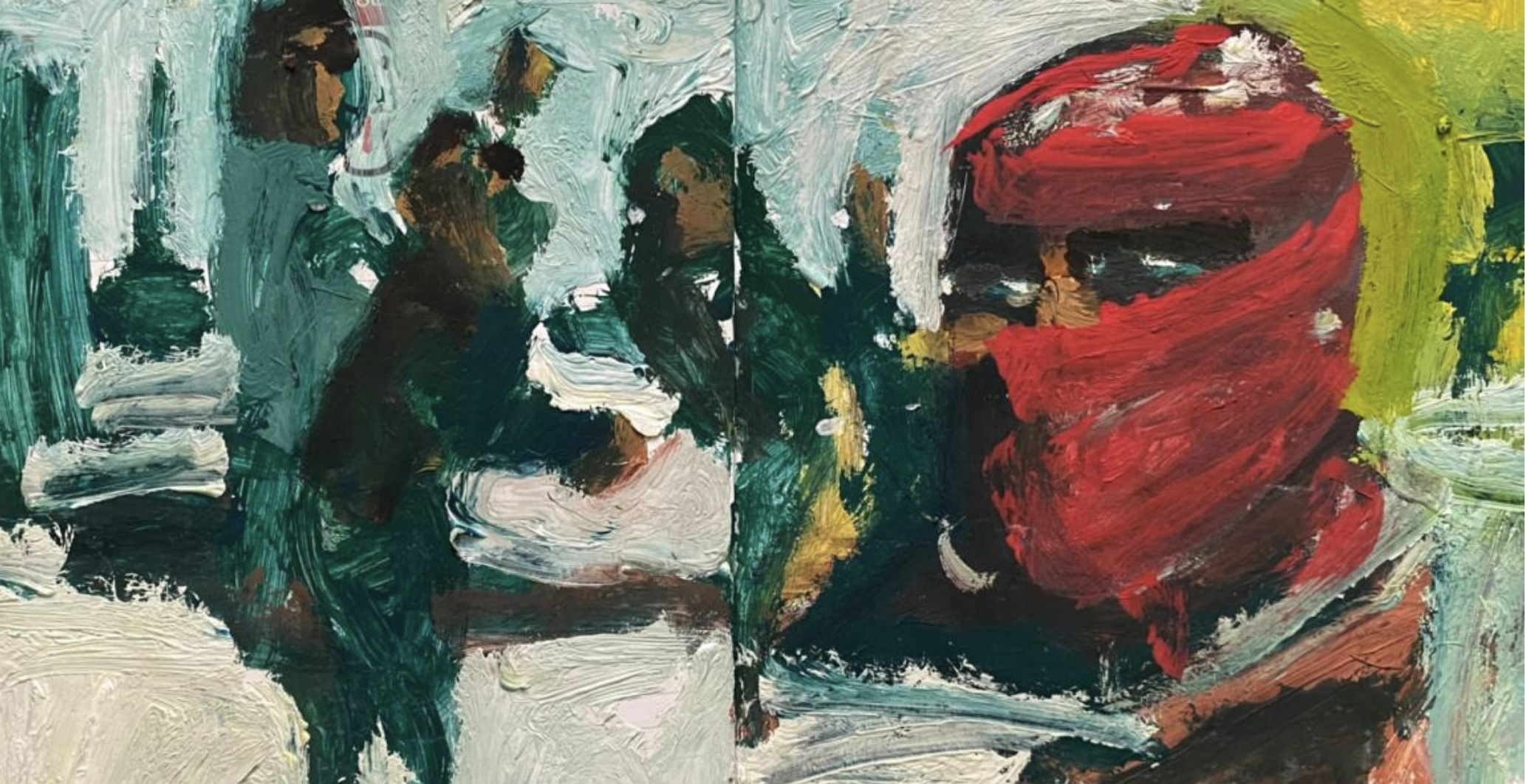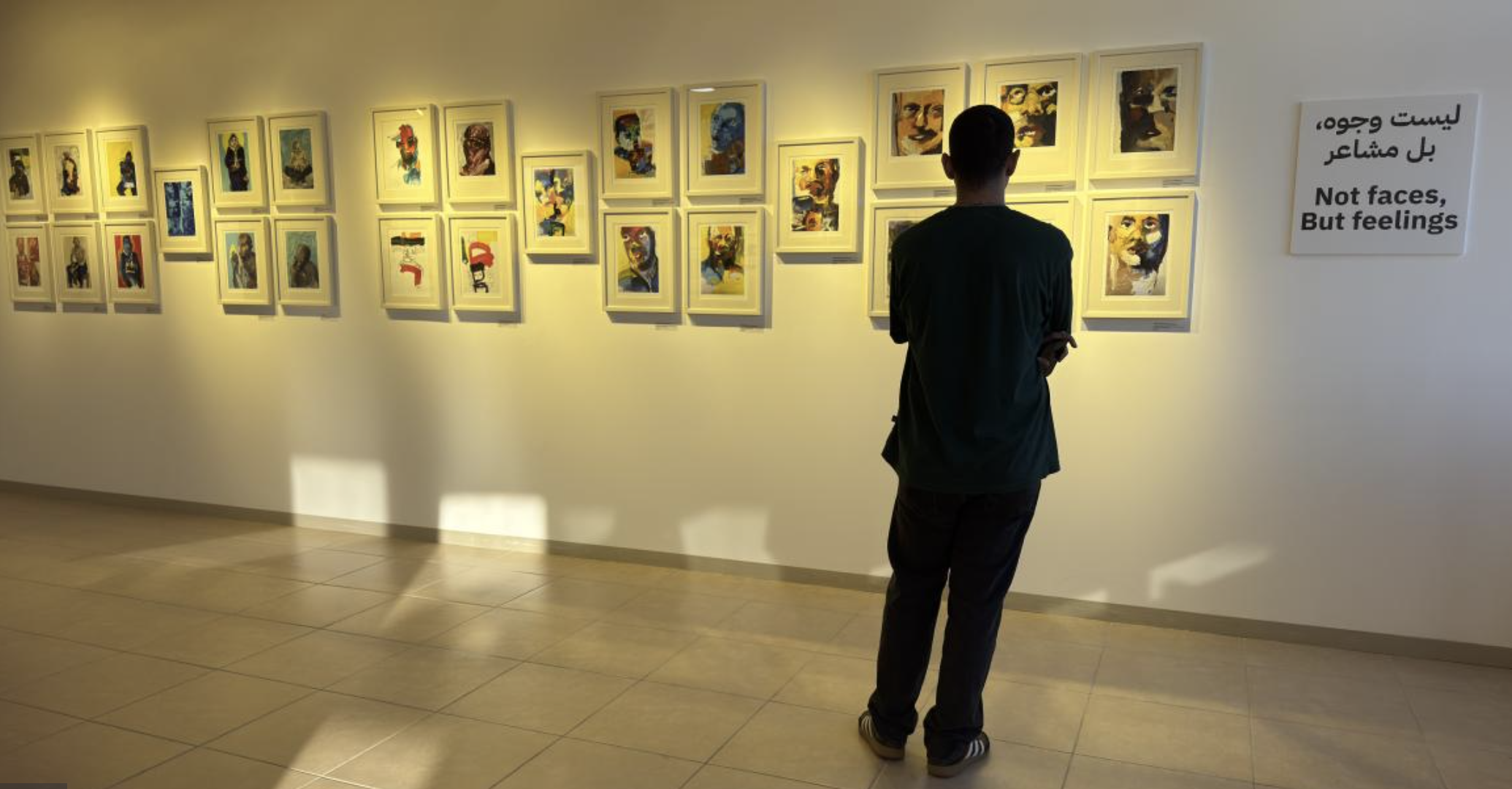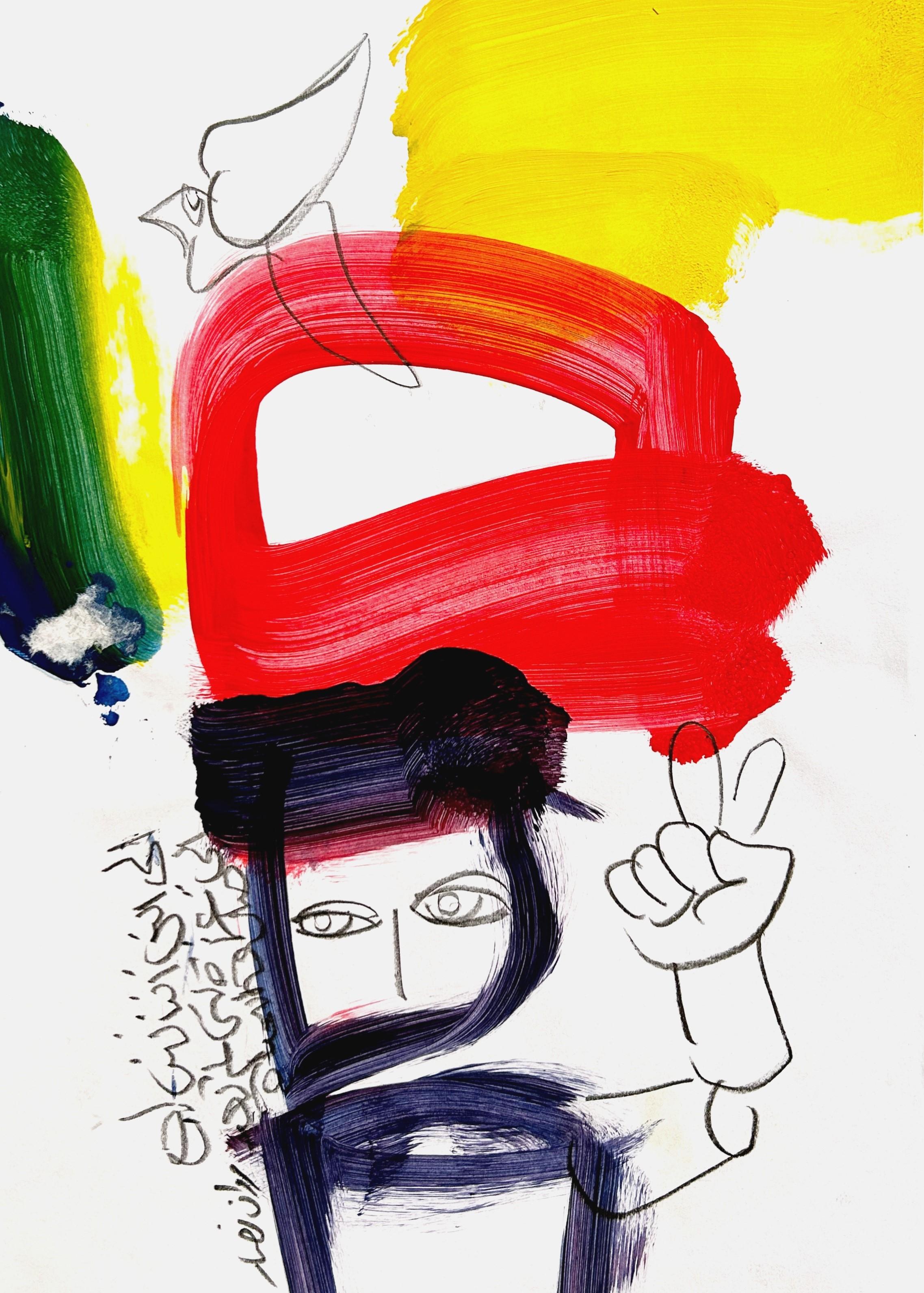Anyone who has followed the artwork that artist Marwan Nassar consistently shares on his Facebook page—his drawings and paintings—can clearly observe the ongoing transformations in his artistic practice. These changes are evident in how he positions himself as an artist, both in terms of perspective and role, and in how this shift is reflected in his vision, style, tools, and visual language.
The early works Nassar produced in the initial months of the war took on a documentary character, capturing the details and rituals of life imposed by the war. These appeared as quick drafts, more like sketches for deferred works or hasty illustrations drawn with bold, strong lines—attempts to grasp a moment he wished to record, or rather to depict: a martyr, a grieving mother, someone riding a donkey, a prayer scene for martyrs, a wave of displacement, and more.
With their sharp, rapid strokes, these works convey the intense pressure of the moment and the overwhelming flood of images the artist deems worthy of preservation. All of this unfolds under the heavy uncertainty that war imposes—especially a war that, from the outset, has borne the marks of genocide. In such a context, everything is at risk of disappearance, erasure, or disintegration—even the artist himself.
Perhaps the ongoing displacement of the artist and his family—like that of most residents of the Gaza Strip—is what continually compels him to reposition himself within his new reality: as a displaced person, as an artist, and as a displaced artist. This experience also sharpens his awareness of the world shaped by his displacement.
In these early works, Nassar seems to be seeking a role to play in the war as an artist, something to engage him and distract from its horrors and anxieties—as a defenseless human being, a worried father, and a member of a society and life under the threat of extermination. Gradually, brushstrokes begin to merge with charcoal lines, shifting away from those harsh outlines, giving the artist more room for his emotions to surface. Yet, these strokes remain controlled, restrained by the need to document reality in a world that is constantly shifting—a process of continuous deconstruction confronted by a temporary and fragile reassembly of existence, revealing its increasing vulnerability, incompleteness, and abstraction. This applies as much to people’s emotions, movements, and gestures as it does to the broader scenes, whether crowded with displaced persons and their belongings, enemies and their machinery and dogs, or prisoners and their nearly naked bodies arranged on the ground in a formation dictated by the killer’s violence and brutality.
Across his many paintings—produced without interruption in his struggle to capture both the violence and fragility of reality—the human figure, in all its states, takes center stage. Whether portrayed as a broken refugee, a fisherman battling the sea's constraint and terror, a wounded person, a martyr, or a witness, young or old, the human remains central. Animals appear sparingly, but the donkey—a peaceful presence amid the chaos and brutality of war—emerges as a recurring motif, a source of reassurance and stability for the artist himself. Birds—sparrows or doves—also appear frequently, intimate beings whose presence seems desired and constant across many of his sketches.
In this shifting context, the artist continually repositions himself spatially, altering his perspective. Sometimes, he adopts a close-up gaze, as if peering through a convex lens; other times, he captures the scene from a bird’s-eye view, or from the angle of a drone lens surveilling its victims and targets—making the scene appear fragile and exposed.
Occasionally, he allows a distance to emerge, suggesting a moment of calm, as if seated quietly, contemplating the scene.
Gradually, time becomes more condensed in his work, and his subjects more focused and intense. This is most evident in the prominent emergence of portraiture, which began to consume much of his time and energy. The face becomes a vast, expansive field—a landscape of colors and subtle expressions, a wide space the artist can retreat into, a means of temporary relief from the collapsing world outside.
Immersing himself in these portraits, he engages in what may appear to be a purely aesthetic pursuit, but one that encapsulates the entire journey of previous transformations, including those affecting the artist's inner world. In seeking to preserve his inner balance and harmony, he seems to have developed a deeper capacity for reflection and immersion—perhaps rooted in finding meaning in his existence as a creative being. His role has transcended that of observer or documentarian; he has discovered the profound purpose art provides its maker, especially within a reality ravaged by human absurdity, where existence itself sways between the dust of obliteration and the fragments of meaning.
Between the painting “Gaza Beach,” created before the war with clean, calculated brushstrokes suggesting serenity—deepened by the blue hues of the sea as a backdrop to two figures standing by a red boat—and other works: one of fishermen on a turbulent sea, vibrant portraits, and his most recent painting of martyrs who died by burning—a journey of transformation unfolds. A journey that didn’t begin with the war, but which the war undoubtedly accelerated and intensified. It forced his artistic practice into a test of survival against the crushing weight of threatened, fragile, and absurd existence—compelling the search for meaning and essence in the experience, as a path for art to survive the fall into futility.
Every day the artist escapes the grip of genocide is another day he continues to bear witness to an apocalyptic reality and a life teetering between death, destruction, and the fading signs of meaning embedded in the very act of survival—and testimony.
Mahmoud Abu Hashhash
A writer and poet based in Ramallah
Published on 24.06.2025


